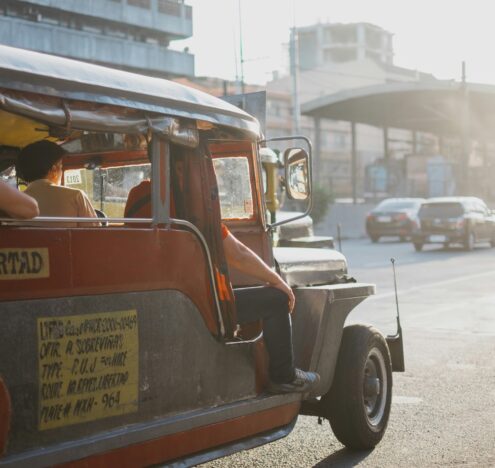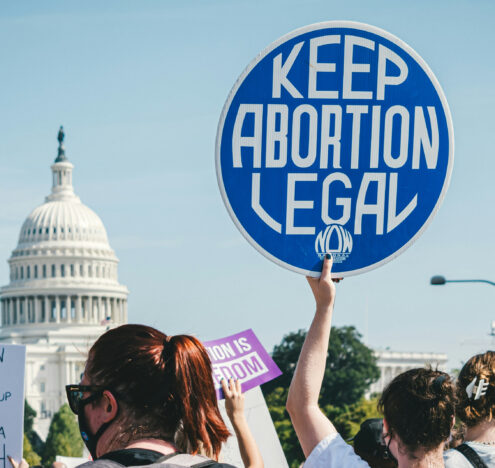The Supreme Court’s draft opinion in the case of Dobbs v. Jackson Women’s Health Organization, which was leaked to Politico on May 2, is not the worst-case scenario for what misogynistic lawmaking can do to a women’s body. In the 1970s, when my mother began working as an ICU nurse at the Indian Hospital in Claremore, Oklahoma, coercive sterilizations were happening down the hall in the obstetrics unit on Native women during childbirth. An investigation by Native rights advocates revealed that between 1973 and 1976, some 3400 tubal ligations were performed on Native women without their consent or knowledge. Dr. Connie Pinkerton-Uri (Choctaw/Cherokee), who blew the whistle on the Indian Health Service, told a radio host, “It is another very clever, very sophisticated way — using the vehicle of healthcare — as a way of genocide.”
When I learned about the Dobbs opinion, like many people, I was disturbed, but I wasn’t surprised. And it’s not because Justice Samuel Alito, who has been on the bench for 16 years, called abortions “egregiously wrong.” Instead, for Indigenous women, such patriarchal authoritarianism — to be sure, a war on women — has long been wielded against our bodies: our wombs, our disappearances, our murders, and our stolen children.
The War on Indigenous Women
The leak about the presumed reversal of Roe was dubiously timed. Not only did the news surface ahead of the Mother’s Day holiday (May 7), but for Indian Country, it set a dull tone for the National Missing or Murdered Indigenous Persons Awareness Day held on May 5. Since 2018, the White House has observed this growing movement that began in Canada. In the last decade, the national political conversation has been addressing the chronic rate at which Indigenous women and girls, two-spirit and transgender people, are disappeared or are killed. But on this day of remembering our women lost to violence, there was little attention paid to the reproductive rights of Native women.
There is much to learn from the difficulties Native women face in meeting their reproductive health needs. The potential reversal of Roe merely intensifies these consequences.
If Alito’s majority draft opinion holds, Dobbs will turn the tables on abortion in Indian Country in ways that could be devastating for Native women. Of the 13 states that could ban abortions immediately, eight are home to some of the highest populations of Native women. In the Dakotas and Oklahoma, representing 52 tribes combined, it is already hard enough being Native and female. According to one study, Indigenous women die from gun violence in Oklahoma more than any other group next to Black women. And in the Dakotas — often called the “Selma of the North” — poverty is higher on some reservations than in most counties in the US, including Sioux County on the Standing Rock reservation in North Dakota and Todd County across the Rosebud reservation in South Dakota. For instance, the average life expectancy of Native women on the Pine Ridge reservation in South Dakota is 55, about 25 years behind the national average. Add to this the backdrop that it was only 15 years ago that the state banned abortions for a short run in 2006. And if that wasn’t jarring enough, an all-male Oglala Nation Tribal Council at Pine Ridge followed suit.
After the draft was leaked in Louisiana, state legislators advanced a bill that would not only ban all abortions but would define them as homicides. Meanwhile, Native women nationwide dressed in red ribbon skirts pounded on drums and sang songs for those killed by unspeakable violence. Juxtapose the murder cases of Native women that turn ice cold in weeks and then drag on for decades like Sophie Sergie’s in Fairbanks — one of many murders that go unsolved in Indian Country primarily due to poor policing — and set that against state control over the biology of a fetus yet formed, and what you have is twisted reasoning for how people value life.
Sixteen states have laws protecting abortion rights. My home state, New Mexico, is one of them. This year, Governor Michelle Lujan-Grisham signed legislation to protect abortion rights in the state, which will be necessary if the federal protection embedded in Roe v. Wade is overturned. This should provide some comfort for the Indigenous women who live there (if they can afford such medical care). But unfortunately, as one of the poorest states in the country, with one of the largest Indigenous populations, New Mexico does not provide an easy path for Native women seeking reproductive healthcare, despite access to several Indian Health Service hospitals and clinics.
In the wake of the leak, several people suggested the sovereignty of Indian Country could help solve an abortion ban because of its unique jurisdictional framework or its separation from state law. Some even relied on a recent Harvard Law Review article to make this case, but the article was flawed. The anonymous author(s) failed to consider the 1976 Hyde Amendment, one of the first legislative gains for the anti-abortion movement, which bars federal funds from paying for terminating pregnancies. The article also ignored how the amendment impacts the Indian Health Services, a network of 170 healthcare facilities nationwide. For the most part, these hospitals and clinics function almost entirely from what is budgeted by the Department of Health and Human Services, which limits what kind of reproductive care Native women can receive in those facilities.
The Hyde Amendment restricts spending US federal funds on abortions except in extreme cases: rape, incest, or when a woman’s life is at risk. Such terminations of pregnancy are rarely performed; on average, once a year, according to a rare study on abortion in Indian Country. Today, most Native women who choose abortion are likely to seek such care outside of reservation-based healthcare facilities — and that’s if they can afford it. There is much to learn from the difficulties Native women face in meeting their reproductive health needs. The potential reversal of Roe merely intensifies these consequences.
Personal Sovereignty
For 50 years, Roe v. Wade has held because most Americans now believe that women and men should have control over their bodies. But to hear Alito tell it, such control so fundamental to human identity has no protection under the US Constitution simply because it is not perfectly spelled out. Moreover, with the precedent Dobbs could set, there are fears that it could pave a legal pathway to restricting forms of contraception that have become widely available — options such as the morning-after pill, among others. And again, these are obstacles that are not foreign to Native women. For example, less than half of Indian Health Service clinics nationwide offer emergency contraception.
Since the leak, some perspectives have portrayed fears about the reversal of Roe as over-reactionary. But considering the history of Native women whose reproductive rights were determined by political will that was not their own, it starkly contradicts Alito’s opinion that “women are not without electoral or political power.” Native women experience violence and death at rates ten times the national average in some pockets of the US. The battle over our bodies and families spans our entire life cycle, from pre-conception, through the systemic separation of Native mothers and their children, to femicide. It is dispiriting that with the attack on the right to abortion, the young generation has to re-enter a battle that women already won 50 years ago.





















